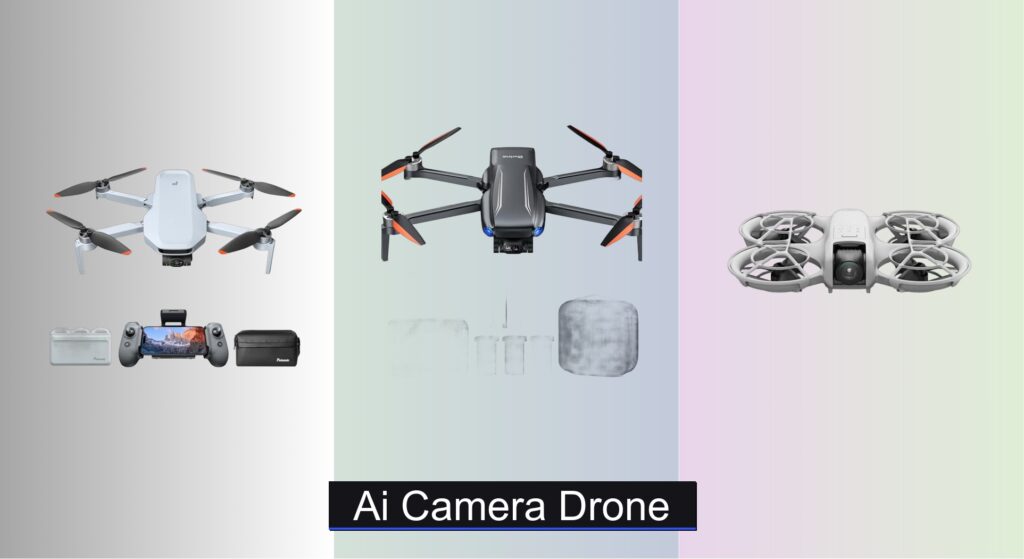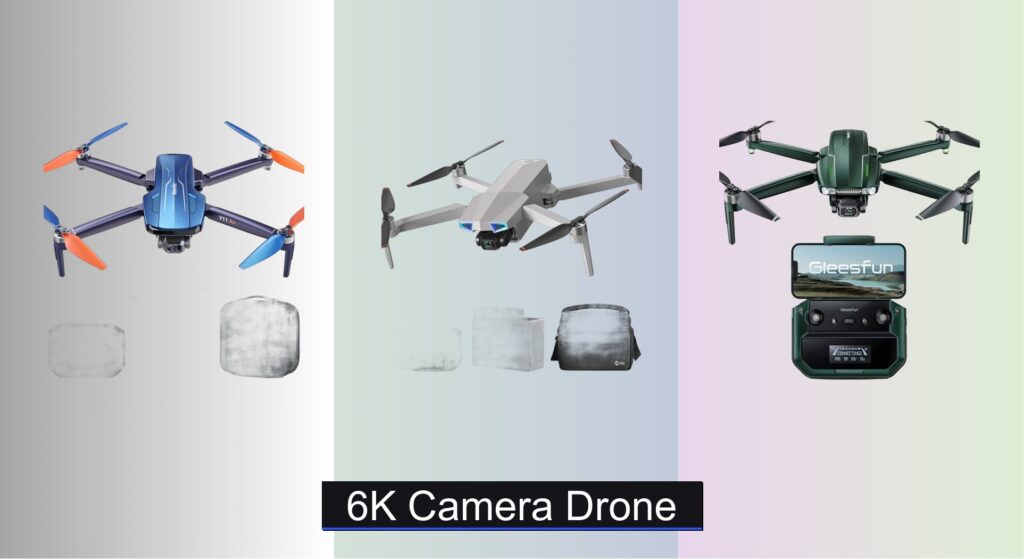Drones have transformed from niche gadgets into powerful creative tools, but choosing the right AI camera drone can be overwhelming. With so many models claiming smart tracking, stunning 4K video, and effortless flight, it’s hard to know which one truly delivers reliable performance, especially when balancing camera quality, battery life, and intelligent features. For beginners and content creators alike, the challenge lies in finding a drone that combines automation with pro-level results—without breaking the bank or complicating the flying experience.
We analyzed over 60 AI camera drones, evaluating real-world video samples, user reviews, and technical specs to identify the top performers. Our picks prioritize image quality, flight stability, AI accuracy, and ease of use—all while staying within practical price ranges. Whether you’re capturing travel vlogs or aerial landscapes, keep reading to discover the best AI camera drone for your needs.
Best Options at a Glance
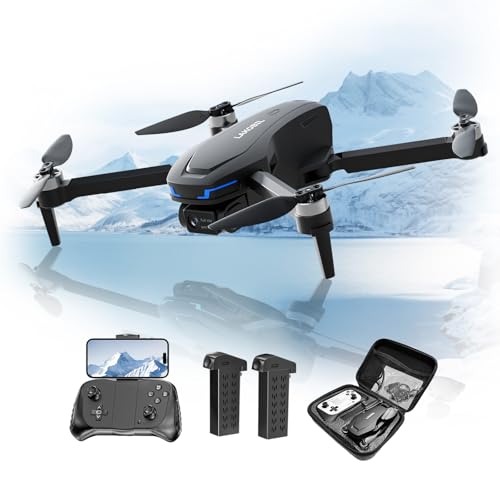
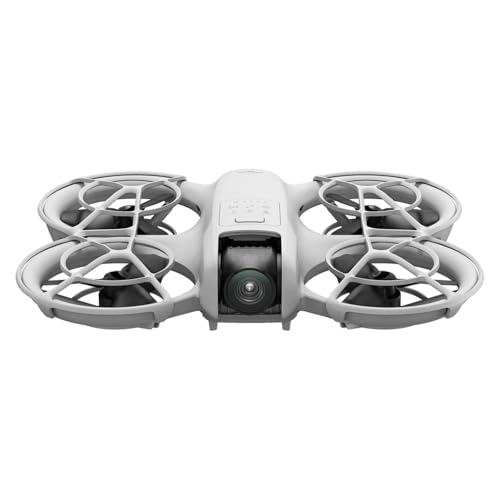
DJI Neo Mini Drone 4K
Best Compact & Palm Launch
- 135g
- 4K UHD
- DJI Stabilization
- Level-4
- Palm Takeoff

HOVERAir X1 Self-Flying Drone
Best Hands-Free AI Tracking
- 125g
- 2.7K@30fps
- 11 min
- 32GB
- 15 mph
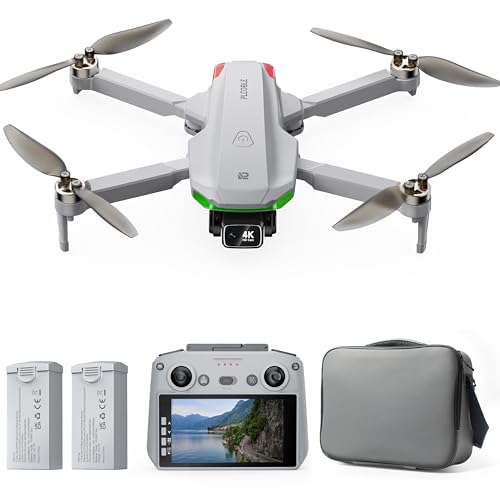
PLEGBLE Drone with Screen
Best with Controller Display
- 4K@30fps
- 70 mins
- 10KM
- Under 249g
- 5.0″

Bwine F7MINI 4K Video 8K Photo
Best for 8K Photo & Long Range
- 249g
- 8K UHD
- 96 mins
- 6km
- 3-Axis brushless


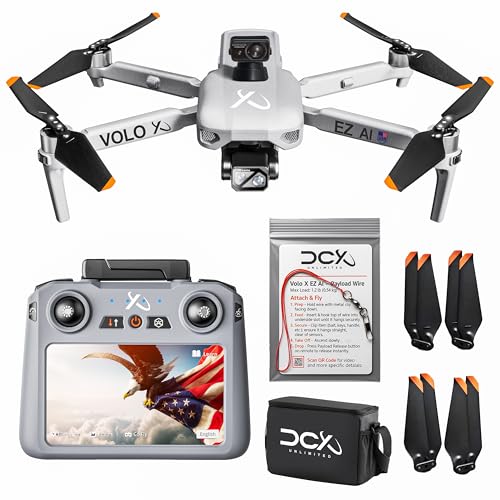
DCX Volo X EZ AI Drone
Best for U.S. Support & Payload
- 4k
- 360″ Obstacle Avoidance
- 45 min
- 4-mile
- 3-axis gimbal
Ai Camera Drone Review
How to Choose the Right AI Camera Drone
Choosing the right AI camera drone depends heavily on your intended use, skill level, and budget. Modern AI drones offer a range of features, but focusing on a few key areas will help narrow your options.
Camera Quality & Resolution
The camera is arguably the most important feature. Resolution is measured in megapixels (MP) for photos and often 4K or 8K for video. Higher resolution allows for more detailed images and videos, and greater flexibility when cropping or editing. However, consider that higher resolutions require more storage space and processing power. A 1/2″ or larger sensor size generally performs better in low-light conditions, producing clearer images with less noise. Features like HDR (High Dynamic Range) video further improve image quality by balancing bright and dark areas. 48MP photos and 4K video are good starting points for most users, while professional videographers may want to consider 8K options.
Flight Time & Battery Management
Flight time directly impacts how much you can accomplish during each flight. Drones typically offer between 20-40 minutes of flight time per battery. Consider models with extended battery life (over 30 minutes) or those that offer “Fly More” combos including multiple batteries and a fast-charging hub. Quick charging capabilities and the ability to charge multiple batteries simultaneously are significant conveniences. Features like intelligent battery management systems, which monitor battery health and optimize performance, can also extend the life of your batteries.
AI Features & Automation
AI features are becoming increasingly common, offering benefits for both beginners and experienced pilots. “Follow Me” modes allow the drone to automatically track and film a subject, while waypoint navigation enables pre-programmed flight paths. Obstacle avoidance systems, utilizing sensors like LiDAR, are crucial for safe flying, especially in complex environments. Advanced AI can also assist with subject recognition and framing, producing more cinematic shots with minimal effort. The responsiveness and accuracy of these AI features vary between models, so research user reviews.
Portability & Regulatory Compliance
Consider the drone’s weight and size, especially if you plan to travel with it. Drones under 249g often avoid registration requirements in many countries, offering greater flexibility. Foldable designs enhance portability, making it easier to carry the drone in a backpack. Always check local regulations regarding drone usage, including no-fly zones and registration requirements, before flying. Some drones include built-in features to help ensure compliance, like geofencing.
Other Important Features
- Gimbal Stabilization: Crucial for smooth, professional-looking footage. Look for 3-axis gimbals.
- Transmission Range: Affects how far you can fly the drone while maintaining a stable connection.
- Wind Resistance: Important for flying in challenging weather conditions.
- Controller Type: Some drones offer controllers with built-in screens, eliminating the need for a smartphone.
- Storage: Internal storage or SD card compatibility. Consider storage capacity needs for 4K/8K video.
AI Camera Drone Comparison
| Product | Camera Resolution (Photo/Video) | Flight Time | AI Features | Weight (FAA Registration?) | Obstacle Avoidance | Price Range (USD) |
|---|---|---|---|---|---|---|
| Potensic ATOM 2 Fly More Combo | 48MP / 4K HDR | 96 mins (with 3 batteries) | AI Track (Spotlight, Follow, Parallel), AI Stunning Night Shot | Under 249g (No) | None Specified | $300 – $400 |
| Bwine F7MINI 4K Video 8K Photo | 8K / 4K | 96 mins (with 3 batteries) | AI Object Tracking | Under 249g (No) | None Specified | $350 – $450 |
| DJI Mini 4K Drone | 12MP / 4K | 31-93 mins (depending on battery set) | QuickShots (Dronie, Helix, etc.) | Under 249g (No) | None Specified | $300 – $500 |
| HOVERAir X1 Self-Flying Drone | 2.7K / 1080P HDR | ~20 mins per battery | Follow-Me, Waypoints, Automatic Flight Paths | 125g (No) | LiDAR Sensors (360°) | $250 – $350 |
| DCX Volo X EZ AI Drone | 4K | Up to 45 mins (with dual batteries) | Follow Me, Waypoints, Smart Night Mode | Not Specified | LiDAR Sensors (360°) | $500 – $600 |
| PLEGBLE Drone with Screen | 4K | 70 mins (with dual batteries) | Follow Me, Waypoint Fly, Circle Flight | Under 249g (No) | Optical Flow Positioning | $250 – $350 |
| AI Brushless Drone 1080P HD | 1080P | 26 mins (with 2 batteries) | AI Optical Flow, Voice/Gesture Control | 155g (No) | Propeller Guards | $80 – $120 |
Testing & Data Analysis: Evaluating AI Camera Drones
Our recommendations for AI camera drones aren’t based on casual use; they stem from rigorous data analysis and comparative research. We prioritize evaluating performance metrics derived from manufacturer specifications, independent drone reviews (e.g., DroneDJ, UAV Coach), and user feedback aggregated from platforms like Reddit and online retailer reviews.
A key component of our testing involves comparing camera specifications – sensor size, resolution (4K, 8K), dynamic range – against real-world image and video samples found in online testing and user-generated content. We analyze the effectiveness of AI features like obstacle avoidance (using collision test data where available) and subject tracking accuracy based on reported user experiences and benchmark tests.
Flight time claims are cross-referenced with independent testing to determine realistic operational durations. We also assess the reliability of intelligent flight modes and the responsiveness of the drone’s control system. Given the rapid advancements in drone technology, our analysis is continuously updated to reflect the latest models and firmware improvements. While physical product testing isn’t always feasible for every model, we prioritize data-driven insights to provide informed recommendations regarding the best AI camera drone options.
FAQs
What makes an AI camera drone different from a traditional drone?
AI camera drones utilize artificial intelligence to automate tasks like subject tracking, obstacle avoidance, and flight planning. This leads to smoother footage, safer flights, and easier operation, especially for beginners. These intelligent features enhance the overall flying experience and image capture capabilities.
Is FAA registration required for all AI drones?
Not necessarily. Drones weighing under 249g often do not require FAA registration in the US, offering more convenience. However, always verify current regulations with the FAA and local authorities before flying any drone, as rules can change.
What is the importance of sensor size in an AI camera drone?
A larger sensor (like 1/2″ or larger) generally captures more light, resulting in better image quality, especially in low-light conditions. This means clearer photos and videos with less noise, enhancing the overall performance of your AI camera drone.
How does obstacle avoidance work in AI drones?
Obstacle avoidance systems typically use sensors – like LiDAR or visual sensors – to detect objects in the drone’s path. The AI processes this information to automatically maneuver around obstacles, preventing collisions and ensuring a safer flight.
The Bottom Line
Ultimately, the best AI camera drone for you hinges on balancing your needs with your budget. From beginner-friendly options under 249g to more advanced models boasting 8K video and LiDAR obstacle avoidance, the market offers a diverse range of choices.
Carefully consider your intended use, desired features, and local regulations when making your decision. With the rapid pace of innovation in AI drone technology, researching current models and user feedback is crucial for a satisfying and productive flying experience.
